Columns

WITH THE NEXT election still almost 18 months away, you’d think the media would focus on more important topics in the meantime, such as where Kim Kardashian is spending her next vacation.
But you’d be wrong. It’s officially time for the press to ignore more newsworthy subjects in favor of endless coverage of the election “horse race,” but without the legendary good sense horses bring to such occasions.
ISIS on the move, taking the Middle East back to the 7th century? Forget that. Let’s talk about Jeb Bush’s 2016 run, although the hook could be how ISIS reminds people of the disastrous policies of the last Bush in the White House. Or was it the one before that? I can’t remember. (In hindsight, the Bush parents should have named alltheir sons George, so presidential ballots could be printed in bulk, enough for several elections.)

AS POPE FRANCIS prepares to release his encyclical on climate change, it’s worth remembering exactly how far the conversation on religion and the environment has come in the past quarter-century.
When I wrote The End of Nature back in the late 1980s, there was very little religious environmentalism. Liberal churches believed that ecology was a subject to be addressed once you’d finished with war and poverty; conservative churches viewed it as a way station on the road to paganism. And Christians in general still reeled under the idea, propounded by Lynn White in an influential essay in Science magazine, that the Genesis call for dominion had led directly to the destruction we saw around us.
In those early days, there were a few wayfarers on this path. Thomas Berry, for instance, and even more important a pair of academics—Mary Evelyn Tucker and John Grim—who picked up his clues and sweated blood to assemble theologians from around the world and search every tradition for the roots of ecological thinking. Episcopal Power and Light—now Interfaith Power and Light—was an early and successful effort at congregational action; Shomrei Adamah (Guardians of the Earth) was an early effort in the Jewish community that has blossomed into many flowers.

SHE WAS MAD—fuming.
Thirteen black evangelical leaders rolled across Southern states on a speaking tour of historic black colleges and universities. On a mission to call forth the next generation of black leaders, we traversed the land where our ancestors had worked fingers to bone, drank from separate fountains, and cut loved ones down from trees like dead fruit.
But this is not what made Vera mad.
For the last hour a crowd of black leaders sat, stood, and leaned in as we shared our stories of barriers to advancement within white evangelical organizations. It wasn’t a mean-spirited conversation. It was a needed one—a healing one. Our stories were strikingly similar, even though none of us had worked in the same organization.

IT’S BEEN HALF a century since Lyndon Johnson declared a War on Poverty, and obviously this is a war that we still haven’t won. According to the Census Bureau, in 2013 there were still 45.3 million Americans living in poverty. That’s nearly 15 percent of the American people, including one in five children and one in three children of color.
Progress has been made on global poverty, with the proportion of people living in extreme poverty worldwide cut in half between 1990 and 2010, but the World Bank estimates that 1 billion people worldwide still live on less than $1.25 per day. Push that up to a mere $2 per day and the number is 2.2 billion people—almost a third of all the people on Earth.
I’ve always described the central fact of God’s economy as this: There is enough, if we share it. There’s no question that we have the resources to end poverty globally and domestically. What we lack are the moral resolve, the political will, and better strategies to make it happen. Yet those three may finally be coming together. I believe there are new confluences occurring that could be both helpful and hopeful.

WHEN YOU WORK for a Christian justice organization, it’s hard to complain about your petty personal problems. Dishwasher leaving spots on the glassware at home? Don’t mention it in the office or you get called out for a “First World problem.” Not happy with your cable company? “Dude, First World problem!” retorts a colleague, pouring coffee into his Amnesty International mug before a meeting on income inequality.
I work with people who have traveled the world working for peace and freedom, who have spent time in jail for their beliefs, but who show no sympathy when L.L. Bean messes up my order. (I purchased the medium winter pullover from their activewear collection, but they sent me a small. And it pinches when I lift my arms to pray during chapel.)
In short, my peers are saints working for a better world. And fortunately for them, they don’t have to look outside the office to see what’s wrong with that world, for I walk among them. I am he (or maybe him), the self-centered manchild whose personal preoccupations give a counterbalance to the righteous intentions of my colleagues. It’s a dirty job, but somebody’s got to do it.
And that somebody needs new kitchen cabinets.

IN AN undistinguished apartment around the corner from my house in Columbia Heights, the Black Power revolutionary Stokely Carmichael honed his forceful, insistent rhetoric and organizing genius. His apartment effectively served as the Washington, D.C. headquarters for the Student Nonviolent Coordinating Committee (SNCC).
Historian Peniel E. Joseph’s recently released Carmichael biography, Stokely: A Life, traces this complicated American revolutionary with nuance and freshness critical in our era of resurging black youth-led movements. Regarding Carmichael’s D.C. years, Joseph describes the intellectual crucible that was Howard University at the time.
The Caribbean-born, Harlem-raised Carmichael lived in D.C. from 1960, when he enrolled at Howard as a philosophy major, to 1965, when he relocated to Lowndes County, Ala., as a fulltime organizer for the black freedom struggle. For five critical years, Carmichael—who was raised Methodist and would later found the Black Panthers and become a leading anti-colonial, pan-Africanist living in Guinea (changing his name to Kwame Touré)—honed his organizing skills and revolutionary perspective from his student apartment on Euclid Street.

I’M PRIVILEGED to be part of a program called the Prime Movers Fellowship, a circle of mainly younger-generation social change agents launched by Ambassador Swanee Hunt and her late husband, Charles Ansbacher. In December, the Prime Movers had a retreat with the Council of Elders, an inspiring group of civil rights era activists. Those two days contained some of the most profound conversations I’ve been part of in 10 years.
Rev. Joyce Johnson facilitated masterfully, opening sessions with prayer and sacred song. Rev. John Fife spoke about launching the Sanctuary movement through churches. Rabbi Art Waskow connected the theme of the Eric Garner killing (“I can’t breathe”) with the climate challenge (“We can’t breathe”).
Rev. Nelson Johnson of the Beloved Community Center told a story about driving into the North Carolina mountains to try to convince a white supremacist to cancel a Ku Klux Klan rally in Greensboro. “I was driving alone,” he explained, “and halfway up the mountain I started to get a little scared. So I stopped my car and got down on my knees to pray. I felt God tell me I was doing something necessary, and I felt my courage return.” He got back into his car and drove on to the meeting.

THE SENATE Intelligence Committee finally released in December its long-delayed report on “enhanced interrogation techniques” employed by the CIA in the U.S. global “war on terrorism.” That these techniques—including waterboarding, “rectal feeding,” weeklong sleep deprivation, threats to harm detainees’ children—constituted torture, in clear violation of the Geneva Conventions, is a reality that is difficult to deny. Sen. Dianne Feinstein and her colleagues should be commended for facing and exposing the grim truths behind our nation’s post-9/11 conduct.
Unfortunately, recent polling has revealed some disturbing attitudes among Americans on this issue—particularly among Christians. A Washington Post/ ABC News poll conducted shortly after the Senate report’s release found that 59 percent of Americans believe the CIA’s treatment of suspected terrorists was justified, compared to just 31 percent who believe it was unjustified. Startlingly, among Christians who were polled, that number rises to between 66 percent and 75 percent who believe the techniques were justified. In this same poll, 53 percent of respondents indicated they believe these techniques produced important information that could not have been obtained any other way, compared to just 31 percent who disagree.

IF YOU’RE TRAVELING by air to Washington, D.C., this winter, be sure to look out your window. You don’t want to miss the lovely patchwork of monuments that covers the city, or the scenic curves of the Potomac River, or the giant dolphin-shaped balloons within arms-reach of your seat in coach. But don’t try to pet them. Setting aside the problem of rapid decompression if you open a window, the balloons are property of the U.S. Army, and they don’t like people touching their stuff.
The balloons—I call them balloons, although they’re actually reconnaissance blimps designed to warn against hostile missiles—float about 10,000 feet above the ground, tethered by inch-wide cables, presumably not held on the other end by children at, say, the zoo. Each blimp looks like a huge white dolphin with an unfortunate—and apparently undiagnosed—abdominal growth protruding from its belly. Clearly, it’s something a qualified medical professional should look at. Of course, if it’s just a navel, there’s no problem. But it’s definitely an outie.
There are two of these blimps, each 243 feet long and weighing, well, nothing, because they’re filled with helium, the gas that would have been used in the Hindenburg had the construction crews been smokers. (Smokers may not be smart, but they’re fast learners.) The blimps float above the Aberdeen Proving Grounds, just outside D.C., in some of the busiest airspace on the East Coast, and trail about two miles of cable connected to the ground. What could possibly go wrong?
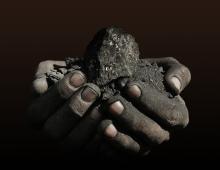
I HAVE SOMETIMES been dismayed by the lack of speed that some churches and denominations have shown when it came to tackling environmental issues. On the question of divestment from fossil fuels, for instance, the Unitarians have been forthrightly in favor, and the United Church of Christ as well (and the Rockefellers!). But the Methodists, Lutherans, Presbyterians, and Anglicans are, by and large, dragging their feet as usual.
Sometimes I confess to imagining that God herself might be getting a bit impatient, too—how else to explain the name of the site for the next great fossil-fuel battle?
It will happen in Australia’s Galilee Valley, a remote basin many hours from the continent’s cities. At the moment it’s basically untouched, but plans call for it to become The Biggest Coal Mine on Earth. There is enough coal beneath its soil to provide 6 percent of the carbon that would take us past the two-degree rise in temperature scientists have given as the ultimate red line. That is to say, one valley in one nation (a nation with one-third of 1 percent of the planet’s population) can do 6 percent of the job of wrecking the planet. One valley!
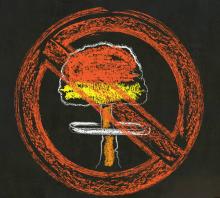
IMAGINE IF YOU will a world in which the most destructive weapons were “conventional” explosives. These bombs, often with nicknames such as “Daisy Cutter” or “bunker buster” or even the “Mother of All Bombs,” have enormous power: The Vietnam-era Daisy Cutter, one of the largest conventional weapons ever used, was designed to flatten a forest into a helicopter landing zone with a blast equal to about 15,000 pounds of TNT.
Now imagine that someone says, “Those conventional bombs aren’t destructive enough. Let’s invent a weapon a million times more powerful, one that releases radiation that magnifies the killing effects for generations. And let’s make 16,000 of those weapons.”
A sane world would respond, “You’ve gotta be kidding.”
But in the real world, it’s no joke.
Today, 70 years after the attacks on Hiroshima and Nagasaki in 1945, the world has 16,400 nuclear weapons—93 percent of them in the arsenals of the U.S. and Russia. The first H-bomb had the force of around 10 million tons of TNT, more than a million times as powerful as the worst conventional weapons.

I WALKED THROUGH the halls of the Rosa Parks Museum in Montgomery, Ala.—slowly. Original documents lined the walls of the nation’s central memorial to the local actions that helped trigger the national mass movement for civil rights. To skim would have been a sacrilege. Each document was evidence. Evidence of struggle. Evidence that America’s apartheid happened. Evidence of a miracle.
The museum is like a labyrinth. Each room builds on the last, adding color and depth to a reality most of the nation has only experienced in the two-dimensional contours of sepia-toned documentary footage and pictures.
I entered the room with the kitchen table where Martin Luther King Jr. dropped to his knees and prayed, weeping, scared, and still holding onto the last vestiges of his personal dream for a middle-class preacher’s life. For my tour group, the room was about that table, but the documents lining the walls like wallpaper caught my eye.
One stood out. It was a full-page newspaper ad with a letter from the White Citizens’ Council of Montgomery to the blacks of Montgomery. The letter pleaded with the black citizens to “stop their violent attack on their city.”
The first time I read “Stop this violence,” I was befuddled. What violence?

THE ISRAELI/PALESTINIAN conflict has claimed countless lives, caused unimaginable trauma, and devastated families and communities for decades. As Christians, we should lament this ongoing tragedy and commit ourselves to the cause of peace. However, we must also confess to and repent of the fact that American Christians have often been an obstacle to peace in the region.
On one side of the conflict, many evangelicals have historically been uncritical supporters of Israel. This support often stems from dispensationalism—the belief that a Jewish state must exist in the Middle East in order for Christ to return. Because the continued existence and thriving of the Israeli state is viewed by these Christian Zionists as nothing less than God’s will, they have historically been unwilling to criticize or even question Israel’s behavior. This reflexive and one-sided support for the Israeli government and military has made it much more difficult for the U.S. to be considered an honest broker in the peace process.
In contrast to evangelicals, some mainline Protestants and other liberal Christians have also been a problem to peace by taking an unrelentingly negative attitude toward Israel. Some Christians from this camp have gone so far as to argue that the premise upon which the modern state of Israel was founded is unjust and illegitimate. Given the present reality of Israel’s existence—not to mention the horrors of the Holocaust—coming to the table with that position is not helpful to having a productive conversation about creating peace in the region. Furthermore, when Israel’s critics downplay or fail to acknowledge Israel’s very real security concerns, it diminishes the validity of their critique of Israel’s actions.
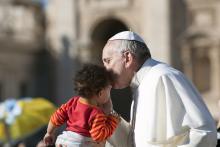
JOURNALIST Elisabetta Piqué was reporting for Argentina’s La Nacion from a conflict zone in Gaza when her phone rang. On the line was her friend, Padre Jorge. He knew Piqué, a war correspondent, was somewhere bombs were falling. He wanted to pray with her.
Piqué had known Argentina’s Catholic Cardinal Jorge Bergoglio since 2001. “He knew me first as a war correspondent,” Piqué told me when we met on a warm October afternoon in the courtyard of Hotel Helix in Washington, D.C. An affectionate friendship developed. Bergoglio even baptized her two children. Her new book, Pope Francis: Life and Revolution, investigates the history, passions, mistakes, humility, courage, and spiritual maturity of the man her friend has become.
In the rush to publish biographies of the new pope, some (see Paul Vallely’s Pope Francis: Untying the Knots) tout Bergoglio’s conversion from careful, benevolent, autocrat to radical, somewhat careless, lover of the poor. Piqué categorically challenges this portrayal. “He is a person who has been consistent all his life,” she says, “not somebody that suddenly became like that now. The theories that he had a conversion are totally nonsense and without any basis. He was always a sensitive person toward suffering.”
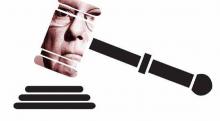
IN MID-JANUARY, the gavel of power will change hands in the U.S. Senate. Mitch McConnell, in a touching act of cross-party reconciliation, will reach across the aisle and forcefully pry the symbol of legislative authority from the desperate grip of Harry Reid. Although the outgoing majority leader said after the midterms, “I have been able to strike a compromise with my Republican colleagues, and I’m ready to do it again,” Reid later clarified that what he meant was the compromise he would strike would be across the knuckles.
After warding off repeated blows, however, McConnell will be the new leader of the Senate, a massive change in political power that will go virtually unnoticed to the public, since he and Reid are both grim-faced, elderly white men whose rare smiles cause parents to cover their children’s eyes and bring their pets indoors.
Indistinguishable in their sour demeanors, they are like brothers separated at birth: two joyless Caucasian babies muttering in their hospital cribs, already soured by the knowledge their lives will be spent in fruitless conflict, the only bright spot being they’ll have comfortable leather seating at work.
Both men are well into their seventh decade, with most of their adulthood spent in politics, another reminder that the true power of incumbency is simply outliving everybody else.
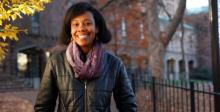
JEN BAILEY PAYS attention. She recognized the paucity of healthy food choices in Nashville’s “food desert” areas and designed an interfaith toolkit to enhance the skills of food- justice organizers tackling that issue. Jen — now Rev. Bailey of the African Methodist Episcopal Church — listened to the recurring theme in her own lived experience: Faith communities can be a catalyzing source for good and are even more powerful when they work together. Bailey hasn’t yet hit 30.
Millennials have gotten serious press this year from Pew, NPR, The Huffington Post, The Atlantic, and the like. Amid their diversity, these roughly 80 million people appear to share several common traits. They are global citizens who want to act and impact locally, who crave meaning, seek entrepreneurialism, prioritize people and networks over institutions, and often profess different parameters of and pathways to success than previous generations. If Bailey is emblematic of her generation in any way, we have a lot to be hopeful about.
This year, Bailey started the Faith Matters Network (FMN), a “multi-faith alliance dedicated to building the power of people of faith to transform our social and economic systems.” The group focuses on the South and Midwest because both areas are significantly impacted by economic inequality and are highly religious. That is, there is a lot of work to be done and lots of people (theoretically) committed to doing it.

IF YOU'VE been following Sojourners’ work for the past few years, you know that we have been deeply involved in efforts to reform our nation’s broken immigration system. In the wake of President Obama’s game-changing executive actions in November and the political firestorm they ignited, it’s appropriate for us to reflect on how we got to where we are today and where we might go from here.
After the 2012 elections, it seemed all but certain that we would see comprehensive immigration reform become law during the 113th Congress. The electorate in 2012 had a higher percentage of Latino voters than ever before, in keeping with our country’s changing demographics. The mandate seemed clear for political leaders on both sides of the aisle to prioritize immigration reform or risk alienating a constituency vital to winning future elections.
Beyond this narrow political calculus, however, many of us became deeply involved in the struggle for immigration reform because we strongly believe that fixing our broken immigration system is a moral imperative, and long overdue. Our faith as Christians compels us to struggle for a more humane immigration system. Indeed, the scriptures could not be clearer. In the Old Testament, the Lord commands: “Also you shall not oppress a stranger, for you know the heart of a stranger, because you were strangers in the land of Egypt” (Exodus 23:9).

AS WE BLITHELY head into what we assume will be another warm winter—given the effects of global warming denied only by the ExxonMobil wing of Congress—we would do well to heed the warning of the nation’s oldest weather forecaster. According to the Old Farmer’s Almanac, the coming winter will be particularly cold, with deep December snows to write home about, if you can get to the mailbox.
I first heard this forecast on the radio, driving home from another of the many craft festivals we attended this fall. We enjoy the talented local musicians and artisans, the copious amounts of free samples, and the chance I get at every handmade soap tent to complain that their cheese tastes funny. (I love doing that. It never gets old.)
The only drawback to fall festivals is the unavoidable encounter with dulcimer players. I listen politely for as long as I can stand it, then cry out, “Can you play ‘Free Bird’ on that thing?!” I do this to restore my sanity, if only for a moment. With its gentle, bell-like tones, dulcimer music is like a droning mosquito that you can’t kill. (The main problem with a hammer dulcimer is the hammer is too small and not made of metal. And they don’t hit it hard enough. I would hit it much harder.)

THE MOOD ALONG Central Park West couldn’t have been sweeter: As block after block after block of scientists and students and clerics strolled by on the People’s Climate March, everyone was smiling. Serious, yes—but calm. Determined, but hopeful. It was a coming out party, and everyone was reassured to see how big and broad this movement actually was.
And everyone was relieved, I think, not to have to listen to speeches. Without politicians explaining what the day was all about, the march was able to speak for itself, with a mix of anger and inspiration exemplified by the front- line communities and Indigenous nations that filled out the first ranks of the procession.
That night, though, there were a couple of speeches worth listening to. They came further up the West Side, at the Cathedral of St. John the Divine, where religious leaders had gathered for a series of meetings and services. At the reception following those talks, Stephen Heintz, the head of the Rockefeller Brothers Fund, cued up a video address from Desmond Tutu, calling for “an end to the fossil-fuel era.” Dressed in his scarlet robes, Tutu saluted activists, saying “the destruction of the Earth’s environment is the human rights challenge of our time,” and demanded that institutions around the planet end their investments in fossil-fuel companies.

2014 WAS NOTHING if not the year when implicit bias was exposed in law enforcement, the justice system, and media reporting. As the nation sorted out reporting on the police shooting of 18-year-old Michael Brown in Ferguson, Mo., police treatment of protesters, and the accuracy of the reporting itself, the words “implicit bias” or “unconscious bias” jumped to the fore again and again.
According to the Kirwan Institute report “State of the Science: Implicit Bias Review 2014,” “Implicit bias refers to the attitudes or stereotypes that affect our understanding, actions, and decisions in an unconscious manner.”
My question is this: If 2014 opened the eyes of the general public to the presence of implicit biases embedded in our systems, could 2015 be the year when we begin to take a closer look at the impacts of implicit bias in our public systems and structures—and the way we talk about them?
For example, take this tit-for-tat about the education system: On Oct. 11, in his third column in a series called “When Whites Just Don’t Get It,” Nick Kristof wrote in The New York Times, “Too many whites unquestioningly accept a system that disproportionately punishes blacks and that gives public schools serving disadvantaged children many fewer resources than those serving affluent children. We are not racists, but we accept a system that acts in racist ways.”